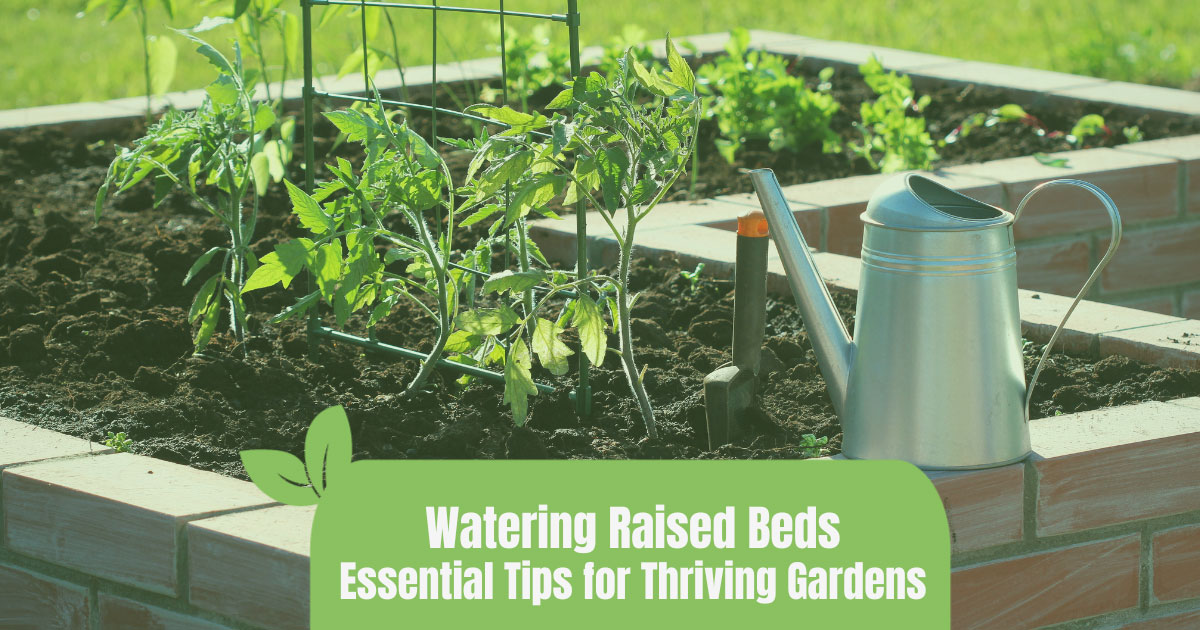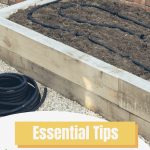



Watering raised beds efficiently is both an art and a science, requiring a keen understanding of your garden’s unique needs. In this guide, we delve into the most effective methods to ensure your raised beds receive the optimal amount of moisture.
From the precision of drip lines to the ancient wisdom of ollas, we’ve got you covered. We also share essential tips to enhance your watering routine, highlight common pitfalls to avoid, and outline maintenance strategies to keep your system in top shape.
With our expertise and one of our high-quality raised beds, you’ll be equipped to foster a lush, thriving garden that’s the envy of the neighborhood.
Ways to water raised beds
Soaker hoses
Soaker hoses work by allowing water to seep out slowly along their length, providing a deep, thorough watering that encourages strong root development. They are laid out on the soil surface, ideally covered with mulch to minimize evaporation.
Soaker hoses are especially useful during peak summer months, ensuring that the soil remains consistently moist without the need for daily watering.
Hand watering
Hand watering stands out for its simplicity and the unparalleled control it offers, allowing gardeners to deliver water precisely where it’s needed most. This method isn’t just about hydration; it’s an opportunity to spot any issues early on.
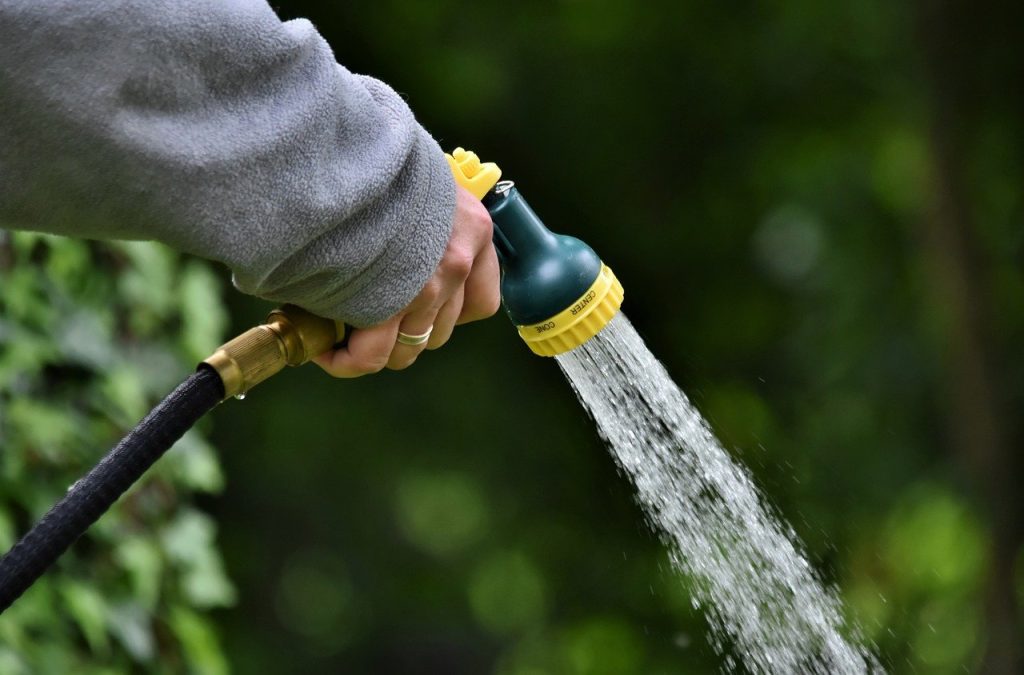
The key is to focus on the soil around the base of each plant. This helps to reduce unnecessary water loss through evaporation and prevents moisture from settling on the leaves, which could lead to fungal diseases.
Ollas
Ollas, an ancient irrigation method, involve burying unglazed terracotta pots within your raised beds. Once filled with water, the porous nature of terracotta allows water to seep out slowly, directly hydrating the root zones of nearby plants.
This method is highly water-efficient, reducing the frequency of watering and ensuring that plants receive moisture at a steady rate.
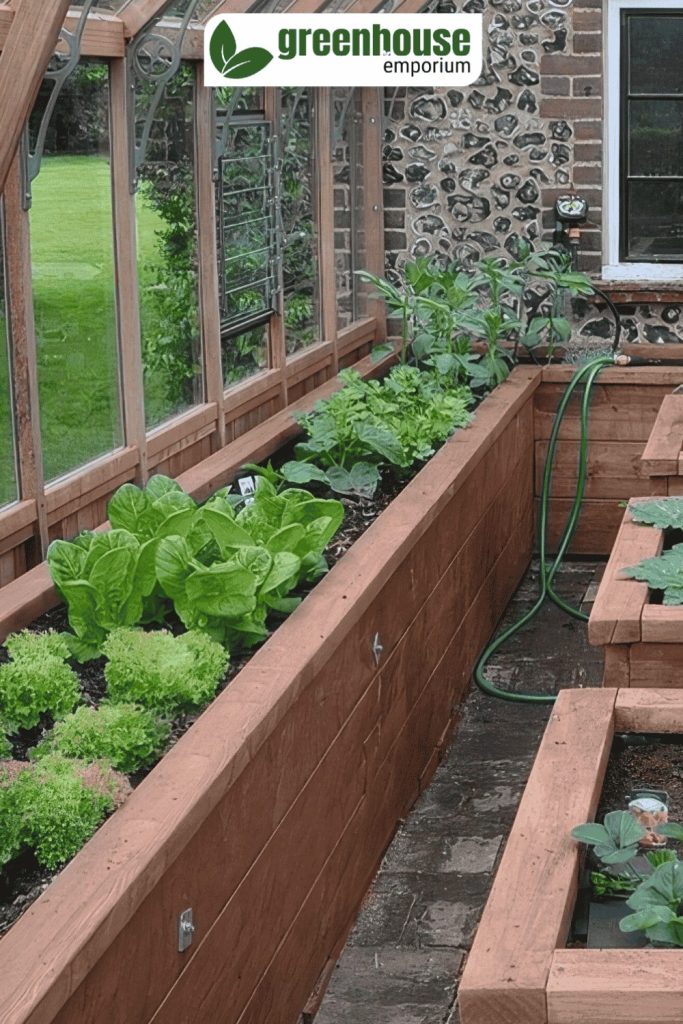
Garden grids
Garden grids are a modern solution that divides your raised bed into equal sections, each equipped with its own water outlet. This setup ensures uniform water distribution, making it an excellent choice for gardeners who prefer a structured layout.
Garden grids can be easily connected to an external water source and controlled manually or with a timer for consistent watering.
Drip lines
Drip lines are highly efficient, designed to deliver water directly to the base of your plants, ensuring that every drop serves its purpose. These systems are particularly beneficial for their low maintenance, as they can be connected to timers, automating the watering process.
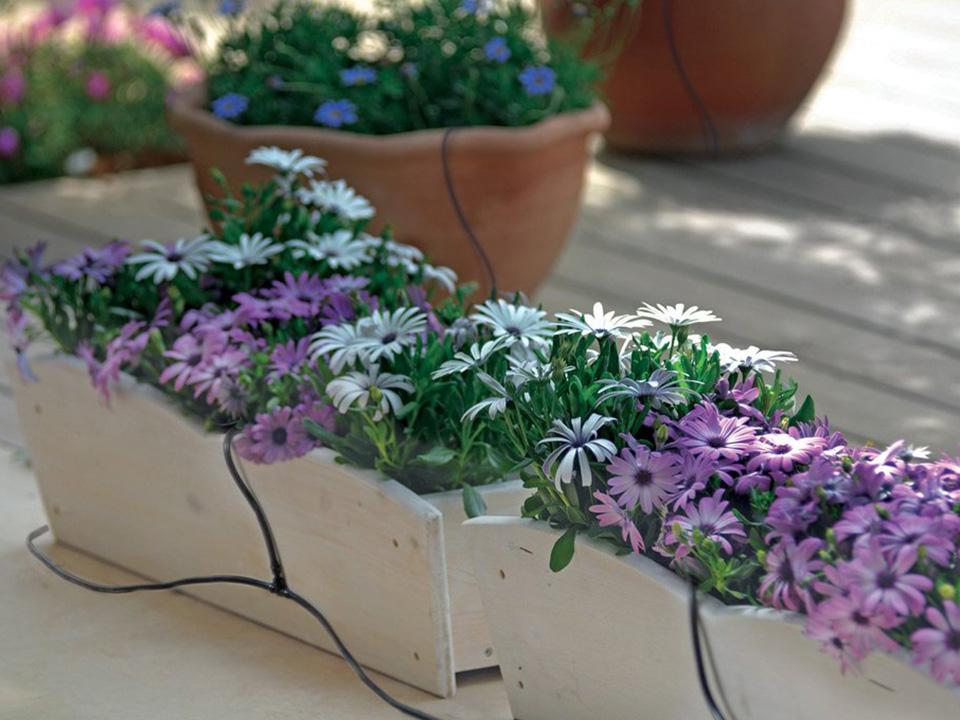
After putting drip lines to the test, we’ve found that this not only conserves water but also frees up valuable time for gardeners to engage in other gardening activities or planning.
Automated sprinkler systems
Automated sprinkler systems, tailored for raised bed gardens, offer the ultimate in convenience and efficiency. These systems can be programmed to water your garden at specific times, ensuring that plants receive water during the cooler parts of the day to reduce evaporation.
While installation may require an initial investment, the long-term benefits of saving time and water make it a worthwhile choice for serious gardeners.
Tips for watering raised beds
Timing is everything
Watering your garden in the early morning sets the tone for a healthy, hydrated day ahead. This practice allows plants to absorb moisture before the sun becomes too intense, reducing the risk of evaporation and ensuring that water reaches the roots where it’s most needed.
An early start also helps prevent the onset of plant diseases associated with evening watering.
Water deeply enough
Encouraging deep root growth is crucial for plant health, and deep watering is the key.
By ensuring water reaches at least 6 inches into the soil, you promote a strong root system capable of accessing nutrients and moisture even during dry spells. This approach fosters plant resilience and reduces the frequency of watering needed.
Use a layer of mulch
Applying a generous layer of mulch around your plants acts as a moisture-retaining shield for the soil.
This not only conserves water by reducing surface evaporation but also moderates soil temperature, providing a stable environment for root growth. Additionally, mulch suppresses weed growth, saving you time and effort in garden maintenance.

Check soil moisture regularly
Before reaching for the hose, check the soil moisture. Overwatering can be just as harmful as under-watering, leading to root rot and other issues.
In our experience, a simple finger test—inserting your finger into the soil up to the second knuckle—can tell you if the soil is dry and needs water or if it can wait another day.
Adjust watering based on weather
Be mindful of the weather and adjust your watering accordingly. After a rainstorm, you can skip a watering session, and during a heatwave, your garden might need extra attention. Keeping an eye on the forecast can help you water more efficiently.
Group plants by water needs
When planning your raised bed, group plants with similar watering needs together. This allows you to target your watering more effectively, ensuring that each plant gets just the right amount of moisture without over or under-watering its neighbors.
What to avoid when watering raised beds
Overhead watering
While it might appear efficient, overhead watering is a misstep. This method can leave foliage damp and vulnerable to a host of fungal infections and diseases.
Directing water to the base of your plants ensures that moisture reaches where it’s most needed, without the added risk.
Overwatering
An all-too-common error, overwatering not only wastes precious water but also hampers the development of a deep, resilient root system.
Plants sitting in soggy soil are more susceptible to root rot and other waterborne ailments. Monitoring soil moisture and allowing the top layer to dry between waterings can prevent these issues.
Watering at the wrong time of day
Watering in the heat of the day can lead to significant evaporation, meaning less water reaches your plant’s roots.
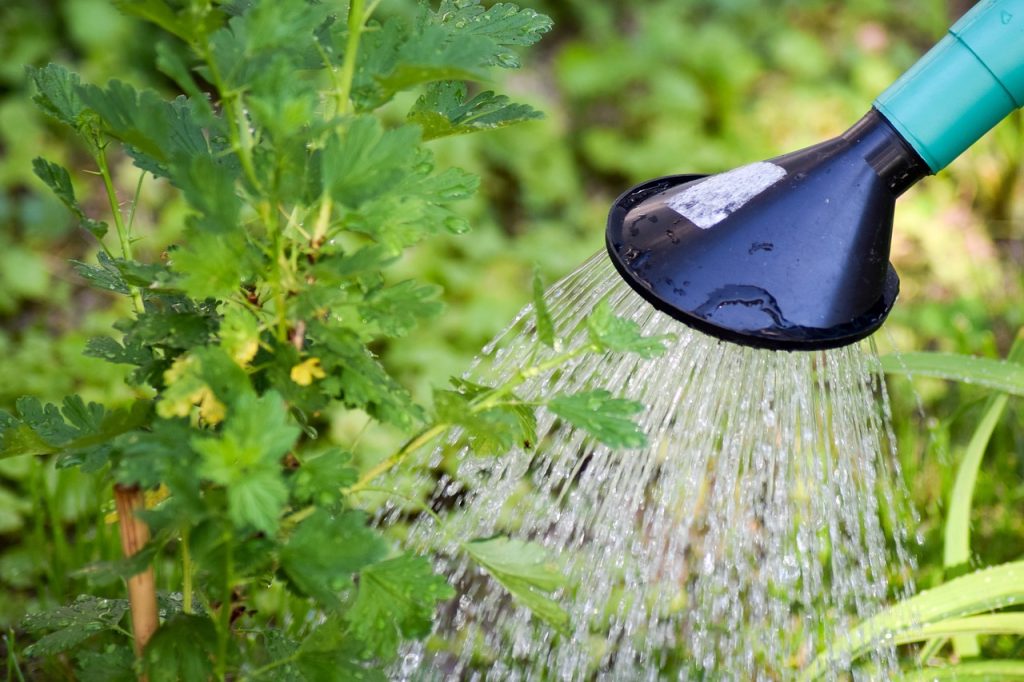
Evening watering might seem like a good alternative, but it can leave foliage damp overnight, which is an open invitation for pests and diseases. Sticking to morning watering is your best bet.
Using hard water
If you’re in an area with particularly hard water, be cautious. The high mineral content can accumulate in the soil, potentially harming your plants. If hard water is your only option, consider collecting rainwater for a softer, more plant-friendly alternative.
Relying solely on watering systems
While automated watering systems are convenient, they’re not infallible. Relying solely on them without regular checks can lead to problems.
Systems can malfunction, and weather changes can alter your garden’s watering needs. Regular manual checks can help catch any issues before they become serious problems.
Neglecting to check soil type
Filling raised beds with different soil types will retain moisture differently, and failing to account for this can lead to improper watering.
Sandy soils drain quickly and may require more frequent watering, while clay soils hold moisture longer and are more prone to waterlogging. Adjust your watering strategy accordingly, and be sure to learn about preparing soil for a raised bed.
How to maintain your watering system
Regular check-ups
Your watering system is the lifeline of your raised bed garden, and like any crucial system, it demands regular inspections. Make it a routine to examine hoses, drip lines, and all connections thoroughly for any signs of wear, leaks, or blockages.
Catching these issues early can prevent more significant problems down the line, ensuring your plants remain hydrated and happy.
Seasonal adjustments
The needs of your garden are not static; they ebb and flow with the changing seasons. As such, your watering schedule should be flexible, adapting to the shifting temperatures and weather patterns.
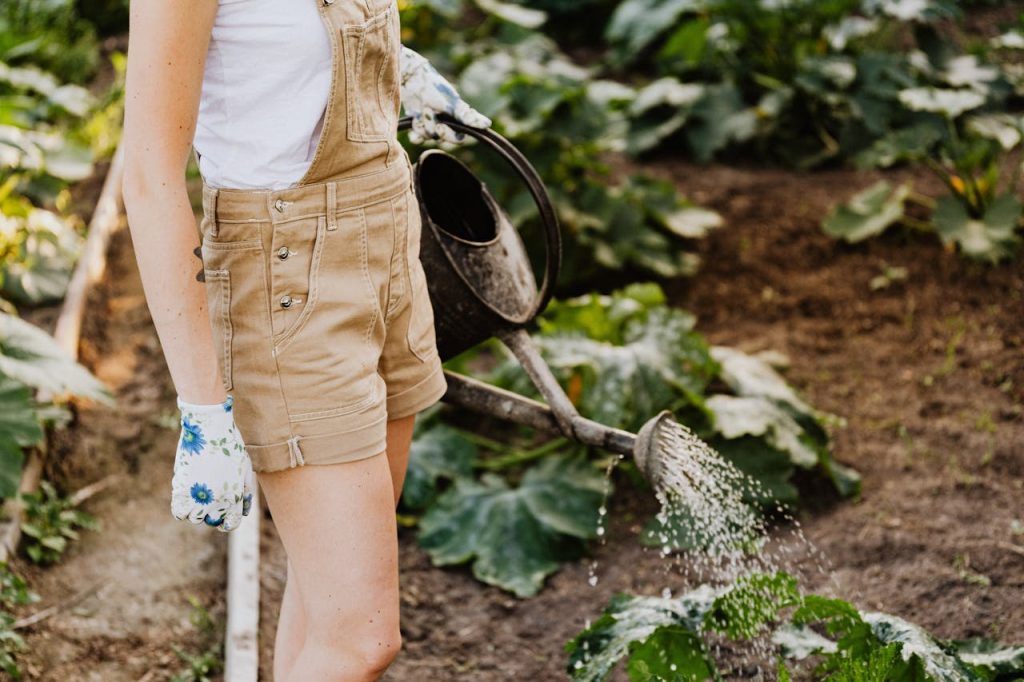
Cooler months may require less frequent watering, such as a fall raised bed garden, while the warmer seasons might necessitate a more generous watering regimen.
Staying attuned to the weather forecast can also inform your watering decisions, allowing natural rainfall to supplement or replace your scheduled watering.
Filter cleaning
If your system includes filters, keeping them clean is paramount. Clogged filters can reduce the efficiency of your watering system, leading to uneven watering or even system failure.
Regular cleaning or replacement of these filters, depending on your system’s requirements, will ensure a steady, unimpeded flow of water to your plants.
Winterization
For gardeners in colder climates, preparing your watering system for winter is a critical step. Water left in hoses or lines can freeze, causing damage or bursting pipes.
Draining your system and storing any detachable components indoors can prevent such mishaps and extend the life of your watering system.
Monitoring pressure
Water pressure that’s too high can damage your system and your plants, while too low pressure can result in inadequate watering. Installing a pressure regulator, if you haven’t already, and periodically checking it can help maintain the optimal pressure for your garden’s needs.
Updating your system
As your garden grows and evolves, your watering system may need to adapt. Adding new lines for expanded areas, upgrading components for better efficiency, or even incorporating new watering methods can enhance your system’s effectiveness.
Regularly assess your garden’s needs and be open to making changes to your watering setup as necessary.
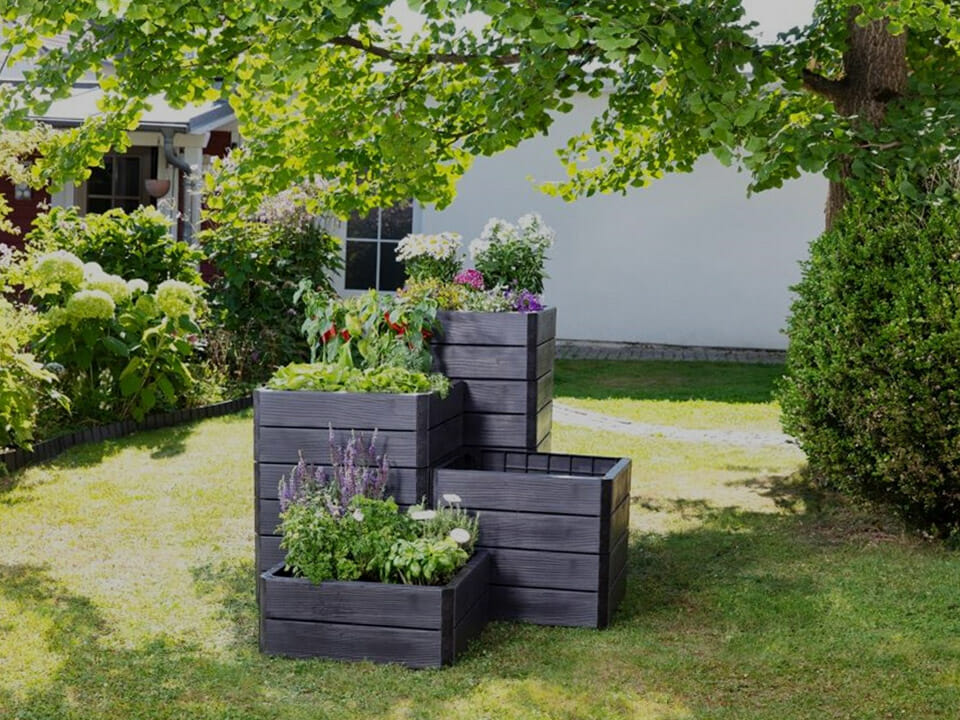
FAQs about watering raised beds
How often should I water my raised bed garden?
It depends on the weather, the soil, and what you’re growing. A good rule of thumb is to water when the top inch of soil feels dry to the touch.
What is the best time of day to water my raised bed garden?
Morning is best. It gives your plants plenty of time to absorb the water before the midday sun can cause evaporation.
How much water should I use for my raised bed garden?
Aim for about 1 inch of water per week, either from rainfall or watering. Adjust as needed based on temperature and rainfall.

